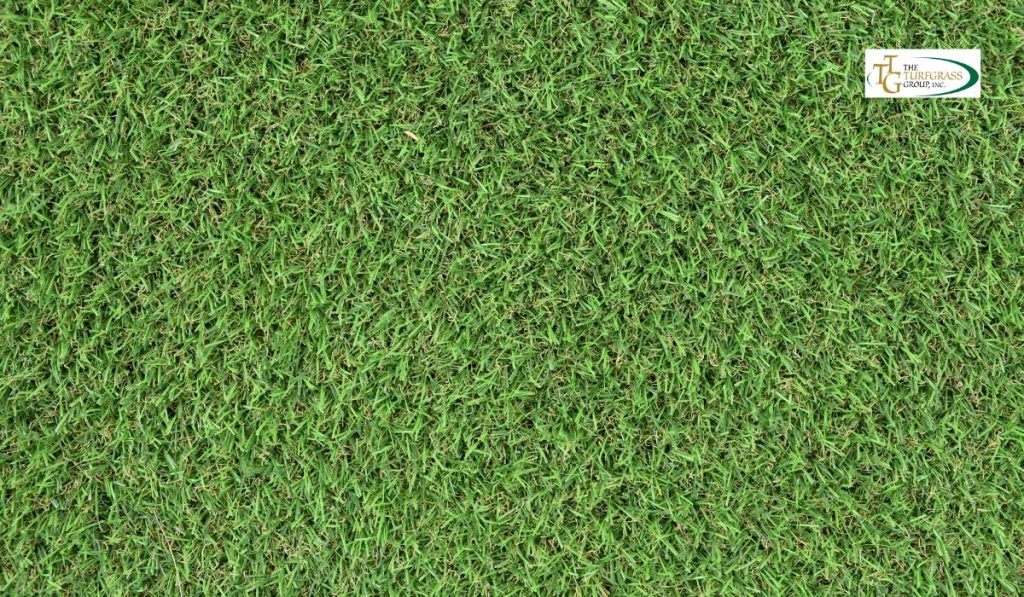
Grass in high-traffic areas is always under duress from walking, running, or even vehicle traffic, so it needs to be able to recover with speed, resist wear well, and look healthy throughout.
In this article, we will focus on two of the best turfgrass selections for high-traffic conditions: Kentucky Bluegrass and Perennial Ryegrass.
These varieties are known for their excellent resistance and ability to grow well under heavy use.
We will discuss the characteristics, benefits, and maintenance requirements of each to enable you to make the right decision for your specific needs.
Importance of Selecting the Right Turfgrass
Before delving into the details of Kentucky Bluegrass and Perennial Ryegrass, it’s important to get an idea of why the right turfgrass choice is highly significant in high-traffic areas.
The quality of grass used will influence everything from aesthetics to maintenance concerns.
Wear Tolerance:
Grass used for sports fields, playgrounds, and any high-traffic area generally faces a lot of footfall, making wear tolerance important.
Grass that tolerates walking, running, or even heavy machinery often remains in great shape for a much longer time.
Recovery Rate:
In heavy-traffic areas, grass will become compacted and damaged.
A right turfgrass variety that has a high recovery rate is necessary so that grass can recover fast and will not leave bald spots or exposed soil.
Beauty:
The grass should retain an aesthetic beauty even in the event of stress.
There are some varieties that have more potential than others when it comes to looking very green, even in a stressed state due to continued use.
Maintenance Needs:
High traffic requires grass that is less maintenance and still provides an excellent, durable surface.
Some varieties of turf will reduce the work needed to maintain your lawn or field.
Important Features of Turfgrass for High Traffic
Turfgrass varieties that hold up well in high-traffic areas typically share some key characteristics:
Durability:
Grass in high-traffic areas must be hardy.
It should have resistance to constant compaction from foot traffic and recover from wear without requiring constant reseeding.
Drought Resistance:
Areas under heavy use often don’t receive much attention with regard to watering, and drought resistance is thus of importance.
The ideal is turfgrass that can withstand dry times while staying green and healthy.
Disease and Pest Resistance:
High-traffic areas tend to stress turfgrass more efficiently, and that can make it susceptible to diseases and pests.
Selection of varieties that are resistant to common turf diseases and pests can minimize the need for care.
Cold and Heat Tolerance:
Depending on your geographical location, your high-traffic area will experience various weather patterns, from the hot summer to the chill of winter.
The appropriate grass must be able to withstand these temperature fluctuations while still possessing strength.
Kentucky Bluegrass: A High-Traffic Area Best Bet
Kentucky Bluegrass is one of the best grasses for any high-traffic area for good reasons.
This variety of cool-season grass presents a lush, rich green color, fine texture, and quick recovery time from damage.
Advantages of Kentucky Bluegrass for High-Traffic Areas
Excellent Recovery from Stress:
Kentucky Bluegrass is one of the outstanding features of its recovery speed from stress.
When under heavy foot traffic, it tends to fill in the damaged areas and produce new growth from its roots, thus minimizing bald spots.
Dense Growth:
Kentucky Bluegrass is a thick turf, which is excellent at crowding out weeds.
It also helps prevent soil erosion, making it an excellent choice for areas with both high foot traffic and concerns about erosion.
Cold Tolerance:
Kentucky Bluegrass excels in cooler climates and is known for its ability to handle freezing temperatures.
This makes it an excellent option for regions with cold winters, as it stays green and healthy even through the colder months.
Aesthetic Appeal:
Kentucky Bluegrass is also beautiful because of the rich green color it achieves.
This is true both for a residential lawn and a professional sports field. It has a fine texture and grows uniformly, creating a visually appealing, soft surface underfoot.
Challenges of Kentucky Bluegrass
Although Kentucky Bluegrass has its benefits, it has some drawbacks.
Heat Tolerance:
Kentucky Bluegrass tends to struggle under extreme heat or drought conditions.
Although it is relatively drought-tolerant, it will still need supplemental water in hot, dry conditions, so it may not be the best choice for warm climates unless supplemented with irrigation.
High Maintenance:
Kentucky Bluegrass requires more maintenance than some other turf varieties.
It must be regularly mowed, fertilized, and watered to keep it in its best condition.
In addition, it may require overseeding in heavy-wear areas to maintain a thick, healthy lawn.
Perennial Ryegrass: A Hard-Wearing and Fast-Producing Option

Another good choice is Perennial Ryegrass, which is characterized by superior wear tolerance, rapid germination, and recovery rate.
It is also used in sports fields and golf courses as well as other high-traffic areas.
Benefits of Perennial Ryegrass in High-Traffic Areas
Quick Germination and Establishment:
The key characteristics of Perennial Ryegrass are quick germination and establishment.
This makes it excellent for areas that require frequent usage, such as where high foot traffic exists.
Areas subjected to frequent damage must quickly recover, and Perennial Ryegrass fills the bill.
High Wear Tolerance:
Perennial Ryegrass is a strong, heavy-traffic turf grass.
Its dense, upright growth provides a firm surface that resists compaction and offers durability in constant use.
Versatility:
Perennial Ryegrass can thrive well in a variety of climatic conditions, from cooler regions to temperate zones.
It also endures a wide range of soil types, making it versatile for many high-traffic applications.
Cold Tolerance:
As is the case with Kentucky Bluegrass, Perennial Ryegrass does well in colder climates and remains green, even at colder temperatures.
It’s used throughout those areas where winter frost often occurs, and as long as it doesn’t freeze for too long, it continues to grow.
Drawbacks of Perennial Ryegrass
Heat Sensitivity:
Perennial Ryegrass, like Kentucky Bluegrass, can also be prone to heat sensitivity.
Such grass would need increased watering and maintenance during its summer months or in longer hot spells within a region.
Shorter Lifespan in Warm Climates:
While Perennial Ryegrass is suitable for cooler climates, it might not be as resilient in regions that experience hot summer heat.
It might start to weaken and die back during the hottest months, causing bare patches.
Mixing Kentucky Bluegrass and Perennial Ryegrass
This combination of Kentucky Bluegrass and Perennial Ryegrass is perhaps the best variety for high-traffic areas.
The advantage of each array will be complemented by the strengths of the other.
The advantages of the mixture:
Although Kentucky Bluegrass thrives well in cold weather and has a thick, lush turf, Perennial Ryegrass germinates very fast and is tolerant of wear and tear.
It results in a lawn that can stand up to heavy foot traffic and weather conditions.
Advantages for Heavy-Traffic Areas:
Kentucky Bluegrass and Perennial Ryegrass together will create a lush green, thick lawn that quickly recovers from damage.
This mixture is perfect for places that have a combination of climates because it offers toughness all the time throughout the year.
Maintaining Turfgrass for High-Traffic Regions
Although Kentucky Bluegrass and Perennial Ryegrass are excellent turfgrasses for high-traffic areas, they need proper care to remain healthy.
Here are some tips to keep your turfgrass thriving:
Watering:
Both turfgrasses need sufficient water but are also susceptible to overwatering.
It is, therefore, essential to water deeply and infrequently to encourage the growth of strong roots.
Mowing:
Regular mowing ensures the grass is healthy and dense.
Mow it to the appropriate height based on the season and variety to promote maximum growth.
Fertilizing:
The grass in high-traffic areas will appreciate regular fertilization, encouraging vigorous growth.
It should be fertilized during the growing season to give it the nutrients it needs to recover from wear.
Overseeding:
In areas of heavy traffic, overseeding will be required to maintain the lawn’s thickness and evenness.
Consider overseeding in the fall or early spring, depending on your local climate, to fill in bare spots.
Conclusion
The selection of appropriate turfgrass for high-traffic applications is a guarantee for achieving a robust, long-lasting, and aesthetically pleasing lawn or field.
Kentucky Bluegrass and Perennial Ryegrass are two of the best selections for such areas because of their excellent recovery from stress, wear tolerance, and vibrant appearance.
Whether you choose Kentucky Bluegrass because of its dense growth and cold tolerance or Perennial Ryegrass because of its fast germination and wear resistance, both give excellent performance under heavy use.
Consider a lawn that can endure foot traffic, recover rapidly, and stay green year-round for even better results.
It is possible to keep your high-traffic area looking beautiful, functional, and resilient for years to come with the proper care of your turf.
FAQ’s
What is the best turfgrass for high-traffic areas?
The best right turfgrass for high-traffic areas includes Kentucky Bluegrass and Perennial Ryegrass.
Kentucky Bluegrass is known for its excellent recovery from wear and its ability to thrive in cooler climates.
At the same time, Perennial Ryegrass offers fast germination and exceptional wear tolerance, making it ideal for areas that see heavy foot traffic.
Can Kentucky Bluegrass handle extreme heat?
While Kentucky Bluegrass is excellent in cooler climates, it struggles with extreme heat.
During hot summers, it may require more watering and care to be healthy.
It is suited for temperate regions and can go dormant in extreme heat unless adequately irrigated.
How long does it take for Perennial Ryegrass to establish?
Perennial Ryegrass germinates and establishes quickly.
Seeds germinate in 7 to 14 days, and a strong root system is based in 3 to 4 weeks.
This makes it suitable for quick recovery in high-traffic areas.
Can I mix Kentucky Bluegrass and Perennial Ryegrass?
It will surely provide the best option when blending Kentucky Bluegrass with Perennial Ryegrass to accommodate high-traffic locations.
This mix integrates both of their strengths into it, such as Kentucky Bluegrass’s hardiness and resistance to cold with fast germination and resistance to wear from Perennial Ryegrass, producing an abrasion-resistant yet very visually pleasing turf.
How frequently do you have to mow your turfgrass for the area that experiences traffic?
In high-traffic areas, you should mow regularly to keep your lawn healthy.
Generally, you should mow once a week during the growing season, making sure not to cut the grass too short to cause stress.
Change the height of the mowing according to the season and type of grass to ensure optimal growth.
Do high-traffic areas require more watering?
Indeed, watering may require more intensity for high-traffic area lawns because the area can compact soil, so the grass might not really retain water as well in these areas.
Deep rooting will be best if less frequent watering is applied with care not to overdo it because too much could result in other issues such as disease or shallow root developments.